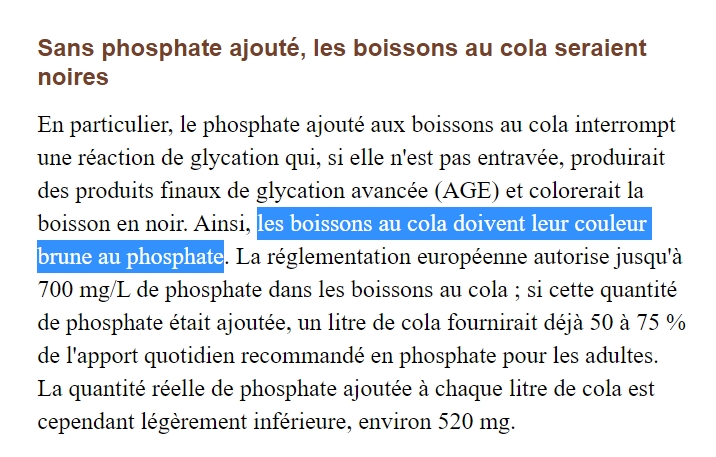Phosphate Additives in Food—a Health RiskEberhard Ritz, Dtsch Arztebl Int. 2012 Jan; 109(4): 49–55.
Background
Hyperphosphatemia has been identified in the past decade as a strong predictor of mortality in advanced chronic kidney disease (CKD). For example, a study of patients in stage CKD 5 (with an annual mortality of about 20%) revealed that 12% of all deaths in this group were attributable to an elevated serum phosphate concentration. Recently, a high-normal serum phosphate concentration has also been found to be an independent predictor of cardiovascular events and mortality in the general population. Therefore, phosphate additives in food are a matter of concern, and their potential impact on health may well have been underappreciated.
Methods
We reviewed pertinent literature retrieved by a selective search of the PubMed and EU databases (
www.zusatzstoffe-online.de,
www.codexalimentarius.de), with the search terms “phosphate additives” and “hyperphosphatemia.”
Results
There is no need to lower the content of natural phosphate, i.e. organic esters, in food, because this type of phosphate is incompletely absorbed; restricting its intake might even lead to protein malnutrition. On the other hand, inorganic phosphate in food additives is effectively absorbed and can measurably elevate the serum phosphate concentration in patients with advanced CKD. Foods with added phosphate tend to be eaten by persons at the lower end of the socioeconomic scale, who consume more processed and “fast” food. The main pathophysiological effect of phosphate is vascular damage, e.g. endothelial dysfunction and vascular calcification. Aside from the quality of phosphate in the diet (which also requires attention), the quantity of phosphate consumed by patients with advanced renal failure should not exceed 1000 mg per day, according to the guidelines.
Conclusion
Prospective controlled trials are currently unavailable. In view of the high prevalence of CKD and the potential harm caused by phosphate additives to food, the public should be informed that added phosphate is damaging to health. Furthermore, calls for labeling the content of added phosphate in food are appropriate.
Typical foods with
large amounts of added phosphate are processed meat, ham, sausages, canned fish, baked goods, cola drinks, and other soft drinks. Dietary counseling is all the more difficult because the phosphate content in food—and, in particular, the
added phospate content—is not marked on the package.serum phosphate concentration is controlled by two newly discovered factors called fibroblast growth factor 23 (FGF23) and klotho
an
elevated concentration of FGF23 leads to increased renal excretion of phosphate and diminishes the activation of vitamin D to calcitriol.As mentioned above, organic phosphate esters are found mainly in protein-rich foods such as dairy products, fish, meat, sausages, and eggs. They are slowly hydrolyzed in the gastrointestinal tract and then slowly resorbed from the intestine. About 40% to 60% of the organic phosphate esters consumed in the diet are resorbed (e1, e8).
The phosphates found in grains, nuts, and legumes are mainly in the form of phytic acid (hexaphospho-inositol), which cannot be split in the human intestine because of the lack of the enzyme phytase (19). The bioavailability of vegetable phosphate esters is usually less than 50% (8, 20) and thus much lower than that of the phosphate esters in protein-rich foods. It follows that the phosphate content of food cannot be automatically equated with the phosphate load.
The phosphate content of industrially processed food is much higher than that of natural food, because polyphosphates are commonly used as an additive in industrial food production (Table). In the European Union,
sodium phosphate (E 339), potassium phosphate (E 340), calcium phosphate (E 341), and salts of orthophosphoric acid diphosphate (E 450), triphosphate (E 451), and polyphosphate (E 452) can legally be added to food as preservatives, acidifying agents, acidity buffers, and emulsifying agents. Phosphate salts are also added to many foods as stabilizers or taste intensifiers.


















